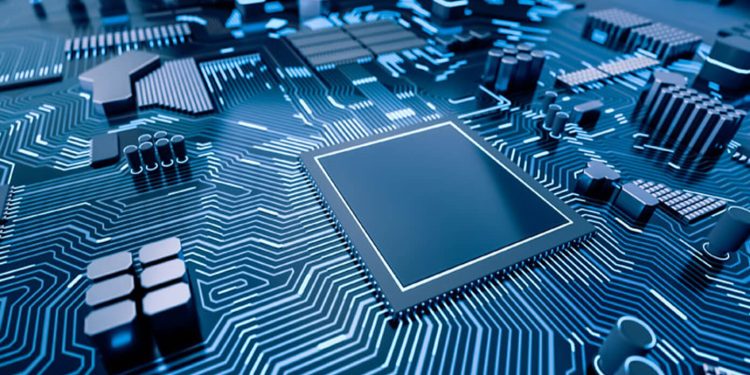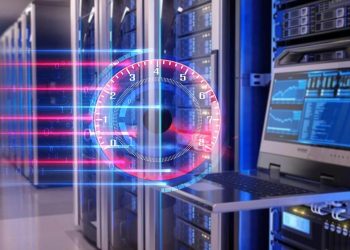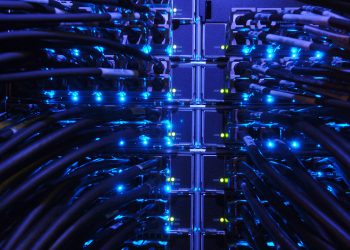Ever since their invention, computers have been progressing, with innovators building on their predecessors. Today we have highly evolved High-performance computing (HPC) that can quickly meet increasing demands for processing speed. They bring together several technologies under one roof, such as computer programs, algorithms, architecture, electronics, and system software, to effectively and quickly solve even the most complex problems. That’s why they have applications in multidisciplinary areas, including:
- Geographical data
- Biosciences
- Oil and gas industry modeling
- Climate modeling
- Media and entertainment
- Electronic design automation
What Makes High-Performance Computing (HPC) So Powerful?
High-performance computing (HPC) uses parallel processing techniques and super-advanced computers to solve complex computational problems and perform research activities. Technologies such as AI, ML, and edge computing can extend high-performance computing (HPC) capabilities to provide high-performance processing power to different sectors.
HPC was initially only used by government organizations, but today, they have several commercial applications. In fact, it served as a vital research resource during the Covid-19 crisis. As the world finds new ways to become more resilient, these trends will heavily influence High-performance computing (HPC).
The symbiotic relationship between Artificial Intelligence and HPC
Due to the vast amount of data collected by devices used by people and organizations, AI is at the core of all the technologies. Data analysis and AI is what make the data so powerful and valuable. HPC enables the computation of large amounts of data for AI workloads, and AI can identify improvements in HPC data centers. From optimizing heating and cooling systems to reducing electricity bills and improving efficiency, AI can monitor the systems and ensure that it is properly configured. AI also enhances data safety and security by malware detection, screening and analysis of inbound and outbound data, and behavioral analytics to protect data.
Enhanced Processing Units
We have several advanced processing units available today, like GPU and TPU. Some of the earlier use cases for Graphic processing units or GPUs are gaming, graphics, and video rendering. Today, GPUs are enhancing High-performance computing as well. The data-intensive tasks in applications are performed by GPUs, which range from machine learning to self-driving cars. GPUs are quite sturdy for handling HPC workloads. While GPUs play a central role in HPC so far, their dominance is being challenged by Google’s Tensor Processing Unit (TPU). Tensor Processing Unit is an ASIC that accelerates AI algorithms and calculations.
The democratization of HPC
While HPC continues to be done in-house or in private clouds, the democratization of HPC or workloads in the public cloud is growing. Large public cloud providers like Microsoft Azure are attracting HPC users who want to use the public cloud to extend their capabilities. Public clouds also enable HPC users to solve machine learning and artificial intelligence challenges.
Moving towards edge
Computing models have shifted from centralization to edge computing. As the workloads move out of the data center and public clouds emerge, traditional data centers are proving to be too slow for modern applications. Edge computing removes latency and speeds up interactions. With edge computing, less processing needs to be done in the cloud, which fastens the response time, thus increasing the efficiency and speed of the HPC.
HPC as a service (HPCaaS)
With the emergence of the cloud as an HPC solution, several vendors are moving from selling equipment to offering HPC as a service (HPCaaS). This trend towards HPCaaS is equally benefiting cloud players such as Google, Amazon Web Services (AWS),
Alibaba, and traditional HPC vendors, who are now offering HPCaaS. Why HPCaaS?
With HPCaaS, even the companies that lack the capital needed to hire skilled staff and invest in hardware can access high-performance intensive data processing and workloads.
Hybrid solutions – enabling the best of both worlds
Cloud computing and Edge computing have emerged as the latest deployment platforms for HPC. To offer the benefits of both platforms, vendors have begun offering hybrid options that include cloud capabilities that complement existing on-premises data centers. This approach overcomes the challenges associated with public clouds, including optimization challenges caused by the diversity and complexity of many industry-specific data-intensive HPC workloads and performance degradation. Additionally, hybrid solutions are customizable, scalable, and offer cloud agility.
Exascale computing – the next-level computing
Exascale computing is capable of performing a whopping 1 billion calculations per second. They are a thousand times more powerful than petascale supercomputers. The best thing about Exascale computing is that it enables the next level of processing power with existing technologies. These supercomputers will be capable of solving previously complex problems, such as – rational drug design for new vaccines, hyperlocal weather, climate simulations, etc. The first exascale computer is scheduled for 2022.
Wrap Up
These and many other advances will continue to enhance HPC even further in the years to come and make it powerful enough to do things that are not inconceivable today. From helping scientists answer some of the biggest questions of the universe to finding the species that are not even known yet, the advances in HPC are an exciting part of what’s to come in the coming years.






